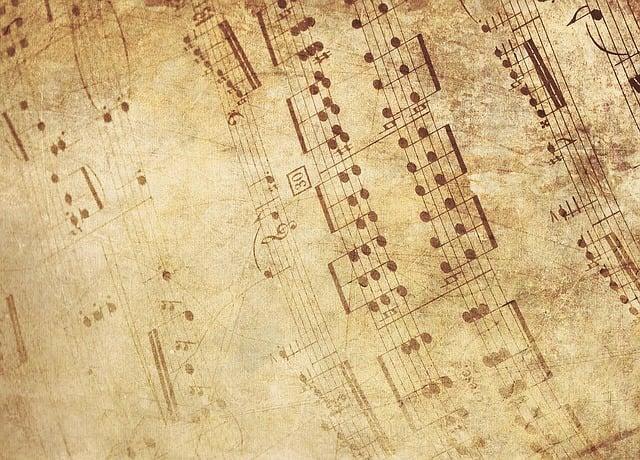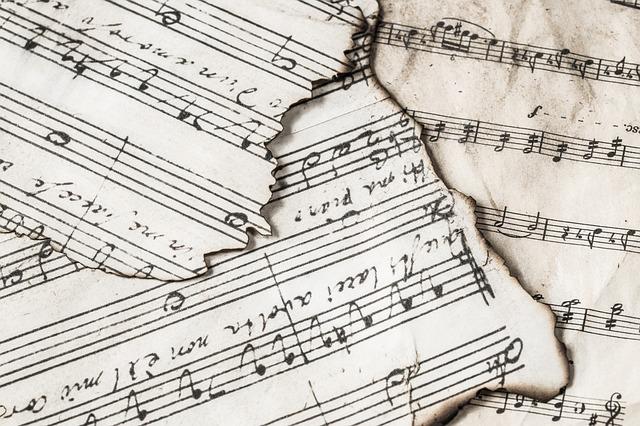Imagine attending a concert where the drummer’s steady beat reverberates through your chest, making your heart race in time with the rhythm. This heartbeat of music, a constant pulse that keeps everything in sync, is often embodied in the time signature known as 4/4. Whether you’re tapping your feet to a catchy pop song or swaying to a soulful ballad, 4/4 time serves as the foundation for countless musical genres, from rock to classical. But what exactly does this signature mean, and why has it become the most popular time signature in music history? In this article, we’ll peel back the layers of 4/4 time, exploring its structure, significance, and the unique role it plays in shaping our musical experiences. Get ready to dive into the heart of music and discover how this seemingly simple rhythm connects fans and artists across the globe.
Understanding the Basics of 4/4 Time and Its Significance

At the core of every memorable song lies a rhythmic structure that gives it life, and 4/4 time is undoubtedly one of the most popular structures in music today. Known as “common time,” this meter makes it easy to follow along and naturally fits within the human heartbeat. Think about it: when you’re tapping your foot or nodding your head to a beat, chances are it’s in 4/4. It consists of four beats per measure, where each beat is represented by a quarter note. This straightforward pattern creates an infectious groove that resonates in genres from rock to jazz and beyond. The stability provided by this time signature allows musicians to experiment with syncopation, accents, and dynamics, giving birth to unique expressions within a seemingly simple framework.
Understanding this rhythm can unlock a treasure trove of musical possibilities. With 4/4 time, you can easily identify the distinction between strong and weak beats, as the first beat is typically emphasized, setting the stage for the melody to unfold. For composers and songwriters alike, this time signature offers a solid foundation to craft their ideas. Here’s a quick breakdown:
| Beat Number | Beat Type | Effect |
|---|---|---|
| 1 | Strong | Initiates the measure |
| 2 | Weak | Leads to tension |
| 3 | Strong | Builds anticipation |
| 4 | Weak | Resolves the measure |
This pattern not only serves as a backbone for countless songs but also fosters an innate understanding of how music flows. Once you grasp the simplicity and elegance of 4/4 time, you’ll find yourself appreciating the layers of complexity that different artists weave into their work. So, whether you’re jamming out at a concert or simply listening to the radio, remember that this common time signature pulsates through the very heart of modern music.
Exploring the Rhythm: How 4/4 Time Shapes Musical Genres

When you think about it, 4/4 time is like the universal language of music—everyone hears it, and it’s the backbone of so many genres. This rhythmic structure provides a familiar frame, allowing musicians to express emotions ranging from joy to melancholy while keeping listeners tapping their feet. With four beats in each measure, it’s a pulse that feels as natural as a heartbeat. You can hear it thumping through pop hits, thumping techno, and even the soulful ballads of R&B. It’s no surprise that most of the songs on your playlist probably fall into this category. Consider how a simple beat can carry the weight of various styles:
<ul>
<li><strong>Pop:</strong> Catchy hooks and polished production.</li>
<li><strong>Rock:</strong> Gritty guitar riffs and anthemic choruses.</li>
<li><strong>Jazz:</strong> Swinging rhythms that dance around the beat.</li>
<li><strong>Hip-Hop:</strong> Lyrical flows layered over strong, steady beats.</li>
</ul>
</p>
<p>But 4/4 isn’t just a metronomic guide; it’s a canvas where creativity paints vibrant soundscapes. Think about a song you love—it likely has a groove that makes you want to move. This back-and-forth between predictability and surprise is what keeps us hooked. The simplicity of four beats allows artists to experiment boldly with syncopation, dynamics, and layering without losing that danceable quality. What’s more, 4/4 time has evolved to give birth to unique sub-genres, like off-kilter indie rhythms and intricate polyrhythms in world music. Just check out this table that breaks it down:
<table class="wp-block-table">
<thead>
<tr>
<th>Genre</th>
<th>Characteristics</th>
</tr>
</thead>
<tbody>
<tr>
<td>Pop</td>
<td>Catchy melodies and structured verses.</td>
</tr>
<tr>
<td>Rock</td>
<td>A driving force with powerful instrumentals.</td>
</tr>
<tr>
<td>Country</td>
<td>Storytelling with a traditional feel.</td>
</tr>
<tr>
<td>Electronic</td>
<td>Layered sounds and progressive builds.</td>
</tr>
</tbody>
</table>
</p>
Practical Tips for Mastering 4/4 Time in Your Music Practice

To truly conquer 4/4 time, think of it as the universal heartbeat of music, a steady pulse that grounds your playing. Start by listening and tapping along to some of your favorite songs that embody this time signature. Feel the rhythm, let it wash over you like a wave. As you listen, try clapping your hands or tapping your foot in time with the music. You’ll quickly notice how the beats fall into predictable patterns, with strong beats on 1 and 3, and softer beats on 2 and 4. This natural cadence mimics the way your heart beats—steady, reliable, and undeniably present in most genres, from rock to jazz to classical.
Once you’ve developed an ear for the rhythm, it’s time to bring it into your practice sessions. Use a metronome to stay on track; it’s like having a personal coach guiding you through every note. Experiment with different tempos, and don’t just play the notes—feel them. Challenge yourself by playing with dynamics; emphasize the first beat and lightly touch the others. Gradually introduce variations, like syncopation, to keep things interesting. Here’s a quick table that highlights some activities for mastering 4/4 time:
<table class="wp-block-table">
<thead>
<tr>
<th>Activity</th>
<th>Purpose</th>
</tr>
</thead>
<tbody>
<tr>
<td>Clapping Along</td>
<td>Develops rhythmic feel</td>
</tr>
<tr>
<td>Metronome Exercises</td>
<td>Improves timing and tempo control</td>
</tr>
<tr>
<td>Dynamics Practice</td>
<td>Enhances expressiveness</td>
</tr>
<tr>
<td>Syncopation Drills</td>
<td>Increases rhythmic complexity</td>
</tr>
</tbody>
</table>
</p>
Applications of 4/4 Time: From Composition to Performance
4/4 time, often known as “common time,” serves as the backbone for countless compositions across various genres. It’s like the canvas for a painter, providing a solid structure upon which creativity can flourish. When composers set their sights on a piece, they often choose this meter because it allows for a natural flow, making it easy for musicians to grasp the rhythm and feel of the music. In genres ranging from pop to classical, 4/4 time sets the stage for catchy riffs and soaring melodies. The predictable pattern, with its four beats per measure, offers a comfortable space for artists to experiment within, leading to pieces that resonate widely with audiences.
Once the composition is complete, performance brings 4/4 time to life in a remarkably vibrant way. Musicians feel the pulse beneath their fingers and in their feet, translating dots and lines on a page into tangible expressions of sound. This meter not only dictates the structure of a song but also allows for various performance techniques like syncopation, dynamics, and phrasing. Think of 4/4 time as a dance floor where different dance styles can emerge within the same rhythm. When performers take the stage, they breathe their unique interpretations into the music, creating a shared experience that invites even the audience to participate, tapping their feet or clapping along.
| Genre | Notable Example | Key Features |
|---|---|---|
| Pop | “Shape of You” by Ed Sheeran | Catchy hooks, simple bass lines |
| Rock | “Seven Nation Army” by The White Stripes | Driving rhythm, guitar riffs |
| Classical | Beethoven’s “Symphony No. 5” | Dynamic contrasts, orchestral textures |
Key Takeaways
As we wrap up our journey through the rhythmic landscape of 4/4 time, it’s clear that this meter is more than just a framework for beats; it’s the heartbeat of music itself. Just as our heartbeat keeps us alive and in sync with the world around us, 4/4 time provides a steady pulse that drives countless songs across genres.
Think of it as the common language of rhythm, easily understood by musicians and listeners alike. Whether you’re tapping your feet to a lively pop song or swaying to a soft ballad, this time signature is always there, subtly shaping your musical experience. So the next time you find yourself lost in a melody, take a moment to appreciate the steady pulse guiding it.
In a world filled with complex rhythms and shifting time signatures, 4/4 time stands as a reminder of the beauty in simplicity and the universal power of music. Keep your ears tuned in, and let the heartbeat of 4/4 time continue to inspire your musical journey!



